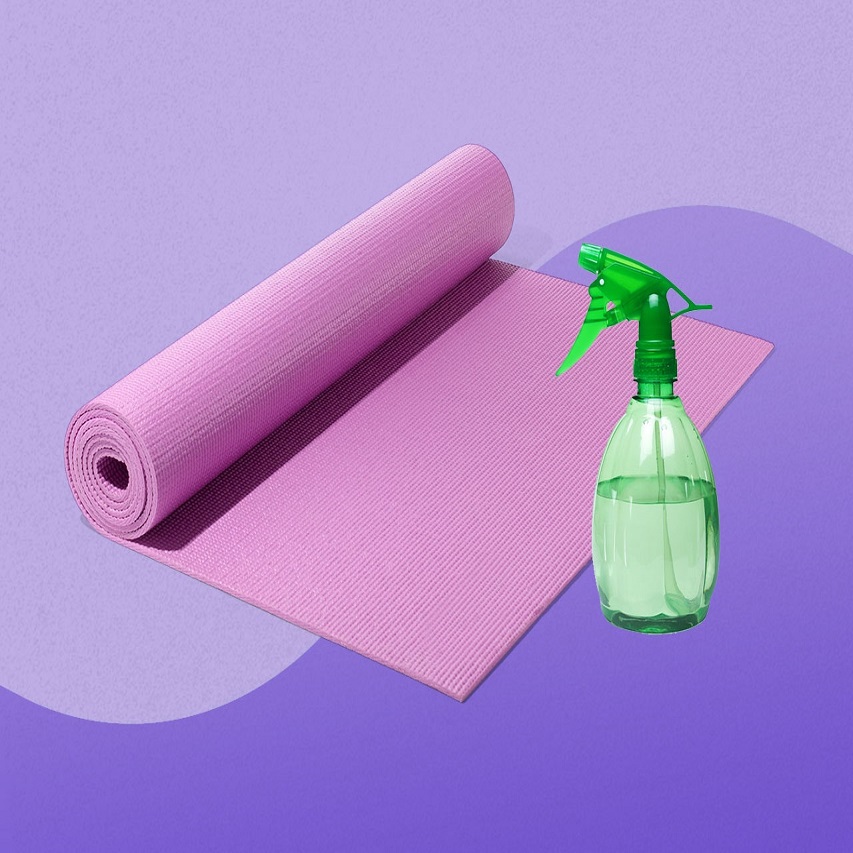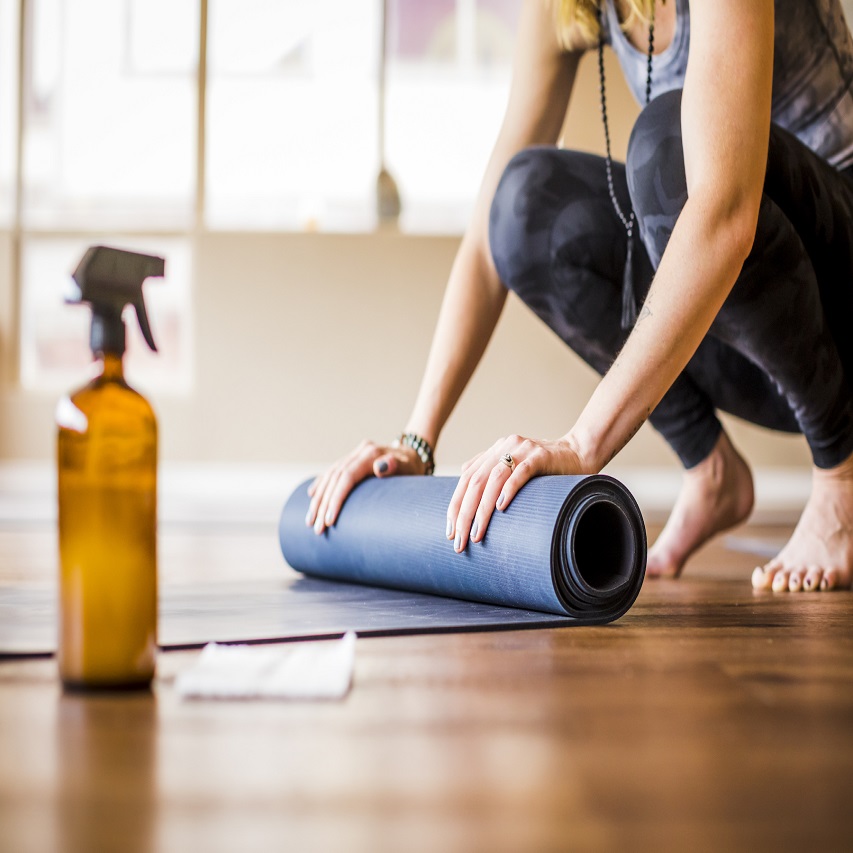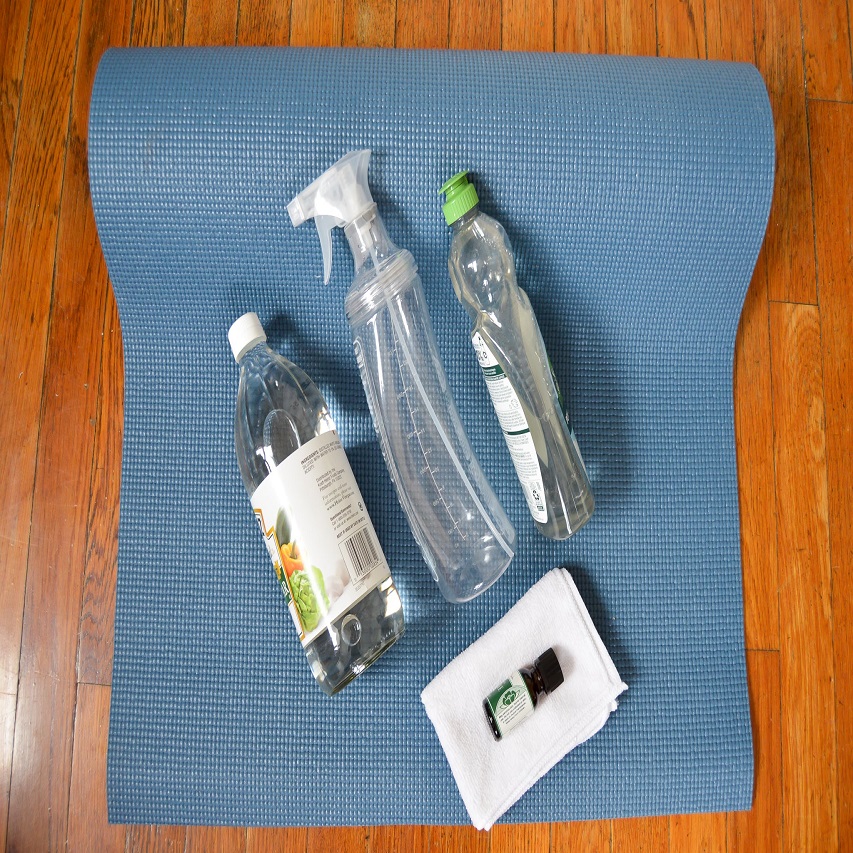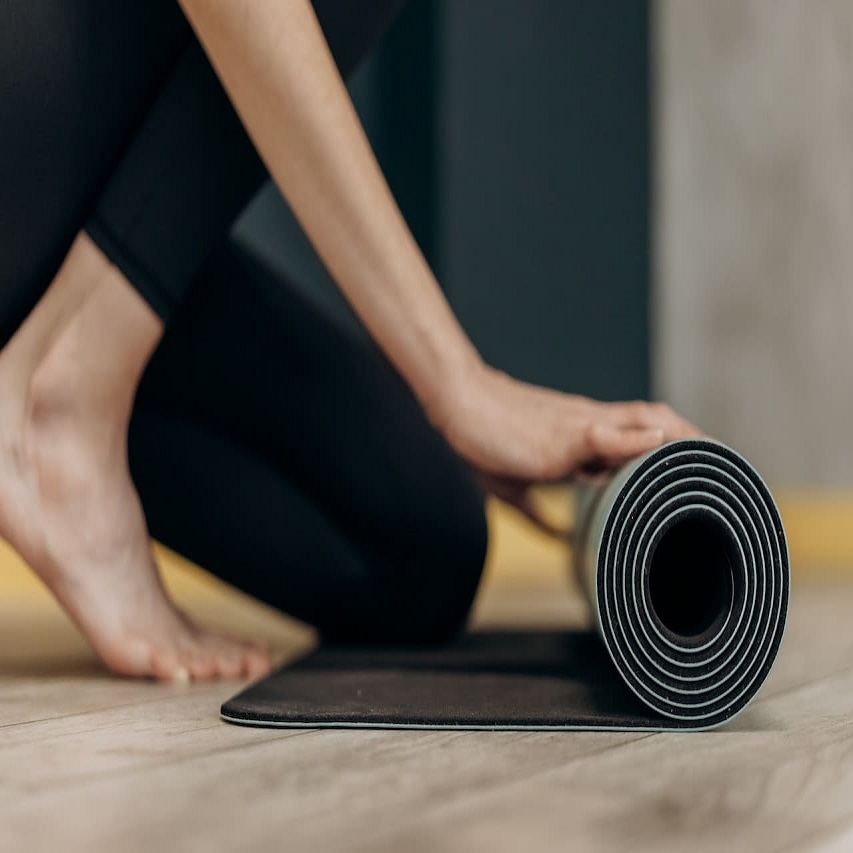How to disinfect yoga mat? Yoga is a practice that promotes physical, mental, and spiritual well-being. Many people find it beneficial, and regular yoga practice has become a part of their lifestyle. With the growing popularity of yoga, the use of yoga mats has also increased. A yoga mat is a necessity for anyone practicing yoga, and it is crucial to keep it clean and free from germs.

Yoga mats can accumulate sweat, dirt, and bacteria, making them a breeding ground for germs. It is essential to regularly disinfect your yoga mat to prevent the spread of germs and maintain a clean and healthy practice space. In this article, we will discuss various methods of disinfecting a yoga mat to ensure that it is safe to use.
Why is it important to disinfect your yoga mat?
Regularly disinfecting your yoga mat is essential for several reasons:
- Preventing the spread of germs: Yoga mats can harbor bacteria, fungi, and viruses, which can lead to infections and illnesses.
- Maintaining cleanliness: Sweating during yoga practice can leave your mat dirty and unhygienic. Regular disinfection can help keep your mat clean and free from odor-causing bacteria.
- Prolonging the lifespan of your mat: Proper care and maintenance, including disinfection, can extend the life of your yoga mat.
Methods of disinfecting a yoga mat:
Using a disinfectant spray:
One of the easiest and most effective ways to disinfect your yoga mat is by using a disinfectant spray. There are several commercial yoga mat sprays available on the market that are specifically designed for this purpose. You can also make your own disinfectant spray using natural ingredients such as vinegar, essential oils, and water.
Cleaning with soap and water:
Another simple method of disinfecting your yoga mat is by cleaning it with soap and water. Mix a few drops of mild dish soap with water, dampen a clean cloth or sponge with the solution, and gently scrub the surface of your mat. Rinse with clean water and allow it to air dry.
Using antibacterial wipes:
Antibacterial wipes are convenient for disinfecting your yoga mat, especially when you are on the go. Simply wipe down the surface of your mat with the antibacterial wipes and allow it to dry before using it again.

Soaking in a tub:
For a deep clean, you can soak your yoga mat in a tub or large sink filled with warm water and a mild detergent. Allow the mat to soak for a few minutes, then scrub it with a soft brush to remove dirt and grime. Rinse thoroughly and hang it to dry.
UV light disinfection:
UV light is known for its germicidal properties and can effectively kill bacteria and viruses. You can use a UV light wand or mat to disinfect your yoga mat by exposing it to the light for a few minutes. Be sure to follow the manufacturer’s instructions for proper use.
Tips for maintaining a clean yoga mat:
- Regularly clean your mat: Make it a habit to clean your yoga mat after every use to prevent the buildup of sweat, dirt, and bacteria.
- Allow your mat to air dry: After cleaning or disinfecting your yoga mat, ensure that it is completely dry before rolling it up or storing it. Moisture can promote the growth of mold and mildew.
- Use a yoga towel: Using a yoga towel on top of your mat can help absorb sweat and prevent it from seeping into the mat.
How to use the yoga mat
Yoga mats are an essential tool for anyone who practices yoga. Not only do they provide a comfortable surface to practice on, but they also help improve stability and prevent injuries. However, simply owning a yoga mat is not enough – knowing how to use it properly is key to maximizing its benefits.
Choosing the Right Mat
Before using a yoga mat, it’s important to choose the right one for your needs. Consider factors such as thickness, material, and texture. Thicker mats provide more cushioning for joints, while thinner mats offer better stability for balancing poses. The material of the mat can also affect your practice – for example, natural rubber mats provide excellent grip, while PVC mats are more durable. Texture is another important consideration, as a non-slip surface can help prevent slipping during a sweaty practice.
Cleaning and Maintenance
Regular cleaning and maintenance of your yoga mat are essential for its longevity and hygiene. After each use, wipe down your mat with a gentle cleaner and allow it to air dry. For deeper cleaning, consider using a mat spray or soaking it in a tub of water with mild detergent. It’s also important to store your mat properly by rolling it up loosely and avoiding direct sunlight, which can cause the material to degrade.

Proper Alignment and Posture
One of the key benefits of using a yoga mat is its alignment markers, which help practitioners maintain proper posture and alignment during their practice. When using a yoga mat, it’s important to position yourself in the center of the mat, with your feet hip-width apart and your hands shoulder-width apart. Use the alignment lines to guide your positioning in poses such as downward dog, warrior, and triangle.
Preventing Slipping
Slipping on a yoga mat can be frustrating and potentially dangerous. To prevent slipping, make sure to use a non-slip mat and practice on a flat, stable surface. If you tend to sweat during your practice, consider using a towel or yoga socks for added grip. Additionally, be mindful of your body weight distribution and engage in active feet and hands to create more traction on the mat.
Enhancing Comfort and Support
A yoga mat is designed to provide comfort and support during your practice. To enhance these benefits, consider using additional props such as blocks, straps, and bolsters. These tools can help modify poses and provide extra support for those with limited flexibility or injuries. Additionally, using a thicker mat or a mat with extra cushioning can provide added comfort for sensitive joints.
Utilizing the Mat for Balance
Balance is a fundamental aspect of yoga, and a yoga mat can help improve stability and proprioception. When using a yoga mat, practice balancing poses such as tree pose, eagle pose, and half moon pose. Use the lines on the mat to align your feet and maintain a steady gaze to help improve balance and stability.
Using a yoga mat is an essential part of a yoga practice, and proper knowledge and technique are crucial for maximizing its benefits. By choosing the right mat, practicing proper alignment, preventing slipping, enhancing comfort and support, and utilizing the mat for balance, you can elevate your yoga experience and deepen your practice. With these tips and techniques, you can make the most out of your yoga mat and enjoy a safer, more comfortable practice.

Conclusion
Maintaining a clean and disinfected yoga mat is essential for promoting a hygienic and healthy practice environment. By following the methods and tips outlined in this article, you can ensure that your yoga mat is free from germs and safe to use. Regular disinfection will not only protect you from illnesses but also prolong the life of your yoga mat, allowing you to enjoy your yoga practice for years to come.
